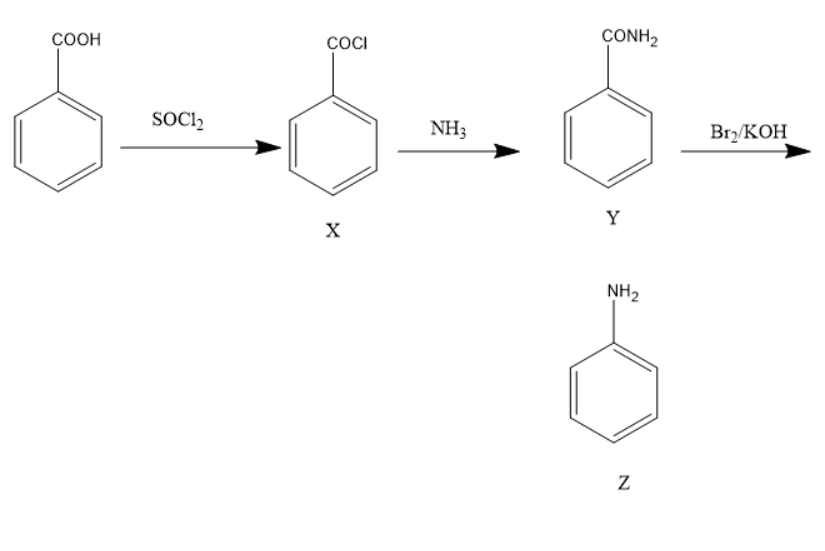
Benzoic acid is treated with
Answer
403.8k+ views
Hint: Benzoic acid is a carboxylic acid when treated with thionyl chloride
Complete Step By Step Answer:
Chemical compounds are classified based on the functional group present in the compounds. Reagents added to the compounds lead to the formation of new compounds.
Benzoic acid is a carboxylic acid with a
The chemical reaction is:

Thus, the product Z is aniline.
Note:
Substitution reaction is the reaction in which one group can be replaced by another compound. In the above reaction, thionyl chloride is a chlorinating reagent that replaces hydroxyl group by chlorine. Chlorine is replaced by amine by the action of ammonia. Amide can be replaced by an amine by bromine and potassium hydroxide.
Complete Step By Step Answer:
Chemical compounds are classified based on the functional group present in the compounds. Reagents added to the compounds lead to the formation of new compounds.
Benzoic acid is a carboxylic acid with a
The chemical reaction is:

Thus, the product Z is aniline.
Note:
Substitution reaction is the reaction in which one group can be replaced by another compound. In the above reaction, thionyl chloride is a chlorinating reagent that replaces hydroxyl group by chlorine. Chlorine is replaced by amine by the action of ammonia. Amide can be replaced by an amine by bromine and potassium hydroxide.
Recently Updated Pages
Master Class 11 Economics: Engaging Questions & Answers for Success

Master Class 11 Business Studies: Engaging Questions & Answers for Success

Master Class 11 Accountancy: Engaging Questions & Answers for Success

Master Class 11 English: Engaging Questions & Answers for Success

Master Class 11 Computer Science: Engaging Questions & Answers for Success

Master Class 11 Maths: Engaging Questions & Answers for Success

Trending doubts
State and prove Bernoullis theorem class 11 physics CBSE

1 ton equals to A 100 kg B 1000 kg C 10 kg D 10000 class 11 physics CBSE

State the laws of reflection of light

One Metric ton is equal to kg A 10000 B 1000 C 100 class 11 physics CBSE

Difference Between Prokaryotic Cells and Eukaryotic Cells

1 Quintal is equal to a 110 kg b 10 kg c 100kg d 1000 class 11 physics CBSE




